- HOME
- HISTORY
- HISTORY
- The Uyeno Group has grown by overcoming numerous crises through a series of innovations.
This section introduces the more than 150 years of history that have passed along
with the turbulent times that began with the opening of the port of Yokohama.
1869
Kinjiro Uyeno founds predecessor of the Uyeno Group
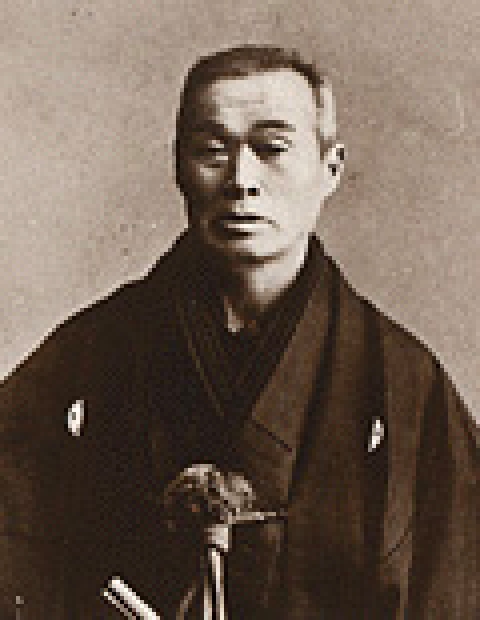 During the end of shogunate, the last half of the 19th century, the social transformation occurring in Japan turned the small fishing village of Yokohama into an international trade city with 3,000 foreigners.
During the end of shogunate, the last half of the 19th century, the social transformation occurring in Japan turned the small fishing village of Yokohama into an international trade city with 3,000 foreigners. Yokohama developed along with the progress occurring during the Meiji Restoration and quickly grew to become the center of trade in Japan and home to many foreign trading houses. In 1869, Kinjiro Uyeno would establish Maruiya, a ship cargo handling office and inn near Noge Bridge (now Miyako Bridge) in Yoshida-machi. This was the beginning of the Uyeno Group.
Founder Kinjiro Uyeno was from Uyeno Village, Uma County in Iyo (now Doi Town, Uma County, Ehime Prefecture). At the end of the shogunate, the clan of Iyo-Matsuyama was assigned to guard the coast of Kanagawa Daiba (Yokohama). Perhaps hearing the news of prospering Yokohama is what promoted Kinjiro to go Kanagawa to participate in the battery construction project assigned to the clan. Through this involvement, Kinjiro directly felt the new breeze prevailing in Yokohama and decided to move there after returning to his home village for a short time. This was the kind of decision you would expect from someone with the business foresight of Kinjiro.
The businesses of Maruiya were the handling of trading goods to and from Boso, in Chiba Prefecture, and management of an inn for ships' crews and passengers. In those days, commodities and food were transported from Boso in sailing ships called godairikisen to feed the rapidly growing population of Yokohama. Although the early business of Maruiya was an inn for ships' crews and passengers, Kinjiro became aware of the growing volume of commodities being transported, and he started his own shipping business. With Yokohama as its homeport, his business expanded throughout Tokyo Bay and then to Shizuoka and northeastern areas of Japan.
Kinjiro's reputation as a reliable and honest businessman spread, and he gradually received more orders for cargo handling. He was later elected chairman of the Association of Inns, a group composed of representatives from 21 towns. His activities were not limited to the expansion of his business as he also contributed to the development of Yokohama.
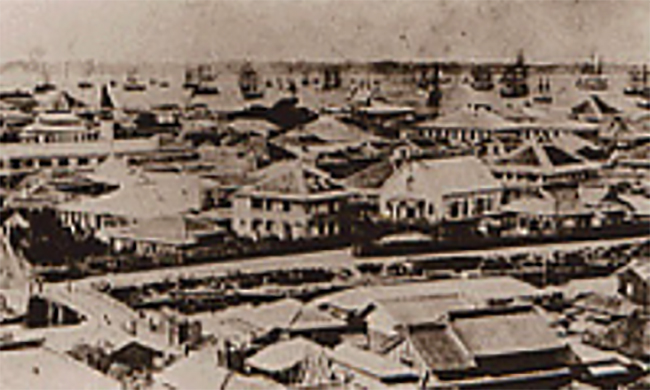 View of the Port of Yokohama from Kaigandori
View of the Port of Yokohama from Kaigandori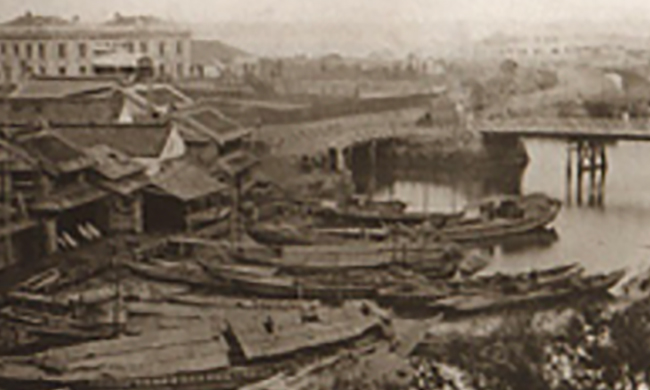 Around Yokohama Station in the 1870’s
Around Yokohama Station in the 1870’s1890
An important stepping stone for development, Kametaro Uyeno succeeds his father in the business.
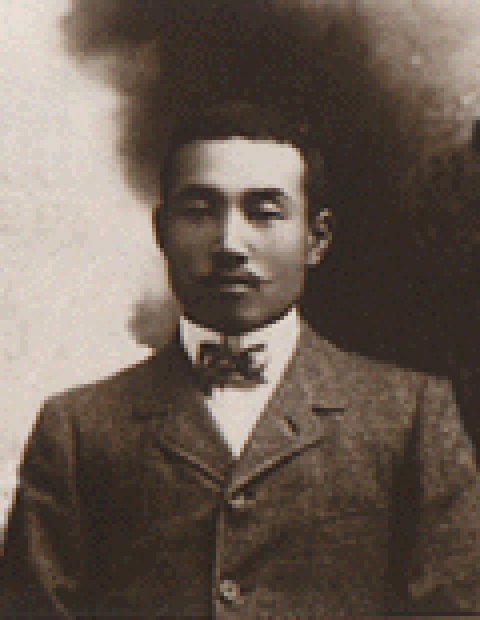
In 1890, at the age of 16, Kametaro, the first son of Kinjiro, succeeded him in the family business. Two years preceding this transition, Kametaro started helping his father in the business, came to know their customers, and helped with collecting money and other tasks. Kametaro was very studious and in addition to working in the family business, he attended Tokyo Commercial College (now Hitotsubashi University). Although most merchants' sons of those days ordinarily found jobs after graduating from senior courses of the primary schools, Kametaro was an exception. He was so eager to learn, and his father Kinjiro had foresight to let him study.
Maruiya, however, was burned to the ground in the great fire of 1899. In his dedication to restore the family business, Kametaro interrupted college studies. It took him seven years to finally finish his studies and graduate. After graduation, he worked for Naigai Trading and Iwasaki Copper Trading House while also running Maruiya. He learned trading during this period despite being very busy. His busy schedule, however, did not keep him from his favorite activities, such as judo, boating, tennis and horseback riding. His vitality was amazing. Like his father, Kametaro was a man of few words with a determined spirit and a great caring for his fellow man.
An opportunity came to Kametaro who was anxious to restore his family business. Rising Sun Company asked him to transport petroleum. The newly founded Rising Sun was established by Samuel Company, known today as Showa Shell Sekiyu. At the time Kametaro was handling petroleum, it was transported in cans. These cans were often damaged when they were stuck against the ship. Kametaro then looked into this problem and reduced damage drastically by distancing the cans from ships' structures and by placing experienced personnel in key positions. With this accomplishment, Kametaro gained the confidence of Rising Sun. In 1909, a petroleum storage terminal was built in Fukagawamannencho, Tokyo. From this storage point the petroleum was to be distributed to Tokyo using tank wagons. Kametaro acquired three tank wagons of his own and entered the overland petroleum transport business.
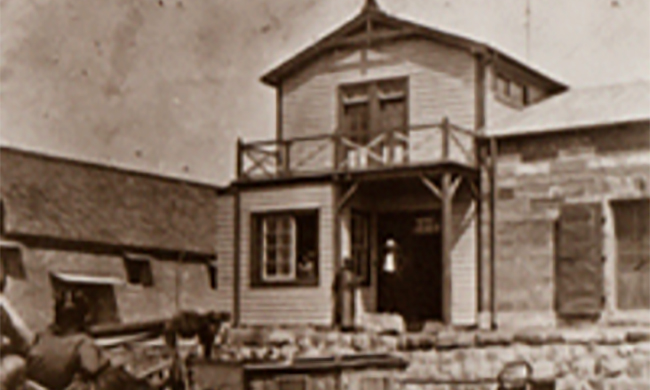 Company building in Kaigandori about 1905
Company building in Kaigandori about 1905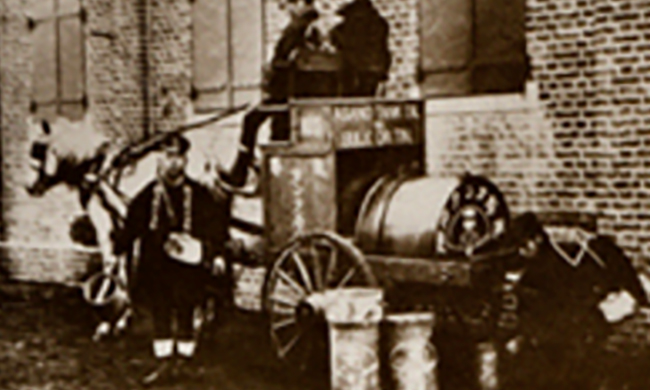 Tank wagons called "Red Wagons" used for transport in the early 1900’s
Tank wagons called "Red Wagons" used for transport in the early 1900’s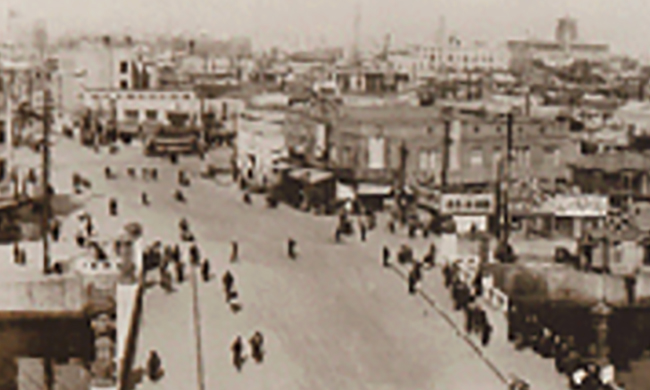 View from the Yoshida Bridge area toward Wagon Road and the Prefectural Capitol Building
View from the Yoshida Bridge area toward Wagon Road and the Prefectural Capitol Building1900
Began transportation of petroleum products for Rising Sun Oil Company, the predecessor of Showa Shell Sekiyu K.K.
1909
Began transporting kerosene in horse-driven tank wagons.
1918
Maruiya was renamed Uyeno Kaisoten.
1923
The Great Kanto Earthquake and the financial crisis were overcome, but the shadow of war looms.
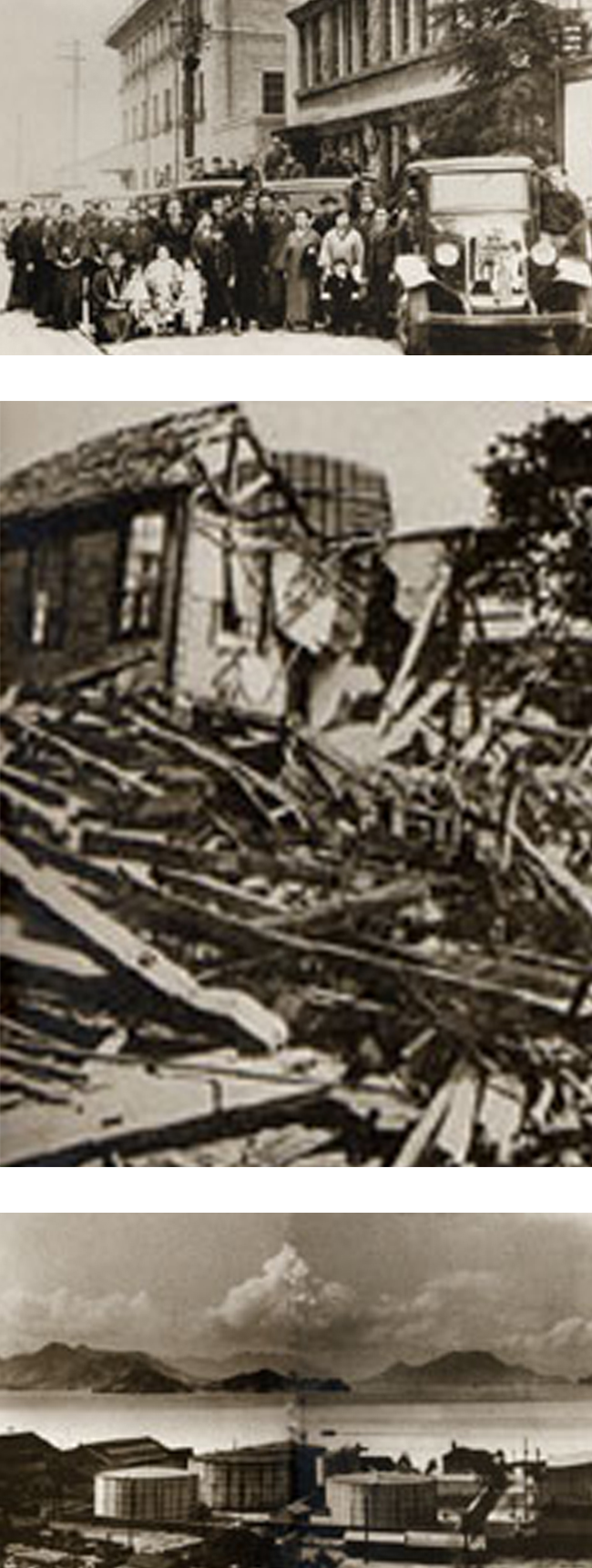
At noon on September 1, 1923, the ground began to shake violently. The Great Kanto Earthquake with a magnitude of 7.9 had occurred. In Kanagawa Prefecture alone, 66,366 houses were completely destroyed, and another 64,753 houses were totally burned in the fires that followed. Damage of this extent had never been experienced before. Kametaro and his family were in their house in the less affected area of Honmoku when the earthquake occurred, and the damage was considerably less. But the damage sustained by the newly organized (1918) Uyeno Kaisoten was serious. Fortunately, the employees were all safe, but the office and the warehouse in Kaigandori as well as the Maruiya Inn in Yoshida-machi were destroyed. The office building of Rising Sun was also demolished and the Hiranuma Oil Terminal was burned to the ground. Consequently, Rising Sun was forced to temporarily move its headquarters to Kobe. Their office was shifted to Marunouchi for their business in the Kanto region, which was resumed mainly with flammable oil and paraffin. Similarly damaged Uyeno Kaisoten rented space in the office of Omuragumi to resume their business. Despite the dire circumstances, Kametaro joined the Yokohama Reconstruction Association and worked hard for the reconstruction of Yokohama.
Rising Sun also began to build new oil storage terminals. In 1924, they built Tsurumi Oil Terminal to replace Hiranuma, and Yanagishima Oil Terminal to replace Fukagawa. Uyeno Kaisoten was transporting more than 25 shipments per month. Small tug boats were used to pull the barges full of oil. Hot bulb engines were used to power the tug boats, so they were equipped with iron cylinders and measures were taken to keep the gases generated inside the barges from leaking out. In 1926, the company was renamed Uyeno Unyu Shokai. At the same time, new offices were opened in Yamashita-cho, in a building belonging to Kametaro's uncle, Kichiji Watano. The financial crisis in the United States spread to Japan causing one bank after another to collapse and Uyeno Unyu Shokai also had a very difficult time. The rapid drop off in business forced the company to sell off its barges and take any other measures it could to hold things together.
In 1931, the Manchurian Incident occurred. The oil market was revived by war-time events and prices rose greatly. Rising Sun expanded its sale of oil and Uyeno's business volume grew proportionately. Having gained Rising Sun's confidence, Uyeno was given charge of all cargo operations and transportation, and as domestic demand rose, Uyeno's gasoline transport volume became No.1 in the country. The prosperity was short lived, however. In 1932, Japan entered pre-war conditions and the Strategic Industries Control Act was enacted. Petroleum was among one of the many commodities affected by the new law.
1926
Uyeno Kaisoten was renamed Uyeno Unyu Shokai.
1932
Began transportation of bulk kerosene between Yokohama and Yanagishima.
1941
Started transportation of aviation fuel in the Seto Island Sea area by order of Army Aviation Headquarters.
1946
Transported oil to various destinations in western Japan under an oil distribution control company.
1948
Emerging from the post-war confusion, Uyeno takes a big step forward with its sole agent agreement with Showa Shell.
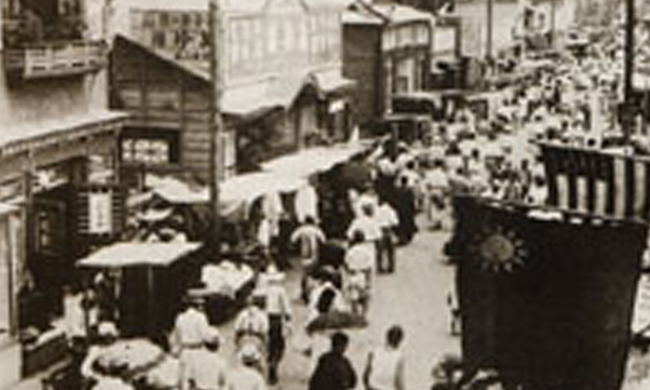 After overcoming the Great Kanto Earthquake and financial crisis, the Pacific War that broke out in 1941 posed a new trial for Uyeno Unyu Shokai. That same year, the company moved its central operations to Itozaki Oil Terminal in the Seto Inland Sea in order to transport petroleum for the Japanese armed forces. As Rising Sun was a British company, its business operations were suspended and its property was placed under enemy property control. As the No.1 gasoline carrier in Japan, Uyeno Unyu Shokai transported aviation fuel to Iwakuni and Noda by the order of the Army Aviation Headquarters.
After overcoming the Great Kanto Earthquake and financial crisis, the Pacific War that broke out in 1941 posed a new trial for Uyeno Unyu Shokai. That same year, the company moved its central operations to Itozaki Oil Terminal in the Seto Inland Sea in order to transport petroleum for the Japanese armed forces. As Rising Sun was a British company, its business operations were suspended and its property was placed under enemy property control. As the No.1 gasoline carrier in Japan, Uyeno Unyu Shokai transported aviation fuel to Iwakuni and Noda by the order of the Army Aviation Headquarters.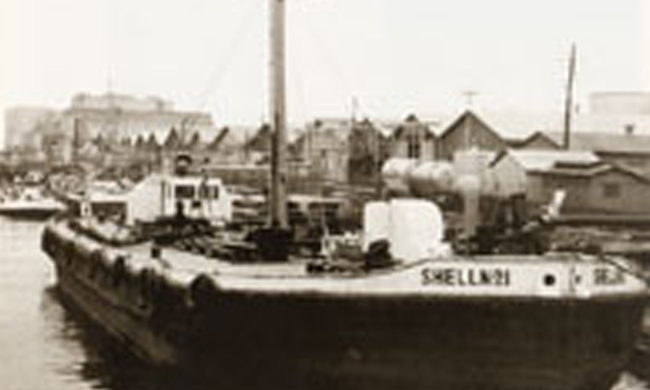 Yutaka, the first son of Kametaro, graduated from Yokohama Commercial College in 1937 and joined Uyeno Unyu Shokai. Soon after adjusting to his job, however, he was drafted by the army and moved from one war area to another as an officer of a ship anti-aircraft artillery regiment. He returned to Japan, and in 1943 was promoted to captain in Hiroshima. During this period he married Misao and made their home in Koi-cho, Hiroshima. Yutaka was 5 kilometers from ground zero when the atomic bomb was dropped on August 6, 1945. He was on his way to Itsukaichi from his home to observe torpedo exercises when he was covered by the “Ash of Death” rain. His life was spared, but he would have been endangered had he been 1 kilometer closer. As a result, he suffered symptoms of atomic bomb sickness, such as fever, but fortunately recovered after one year.
Yutaka, the first son of Kametaro, graduated from Yokohama Commercial College in 1937 and joined Uyeno Unyu Shokai. Soon after adjusting to his job, however, he was drafted by the army and moved from one war area to another as an officer of a ship anti-aircraft artillery regiment. He returned to Japan, and in 1943 was promoted to captain in Hiroshima. During this period he married Misao and made their home in Koi-cho, Hiroshima. Yutaka was 5 kilometers from ground zero when the atomic bomb was dropped on August 6, 1945. He was on his way to Itsukaichi from his home to observe torpedo exercises when he was covered by the “Ash of Death” rain. His life was spared, but he would have been endangered had he been 1 kilometer closer. As a result, he suffered symptoms of atomic bomb sickness, such as fever, but fortunately recovered after one year.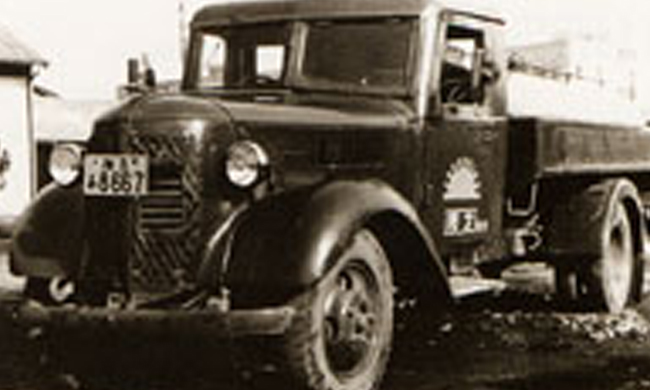 Following the war, for one year until he started receiving business from the oil distribution control company, Yutaka went to Osaka and engaged in the transportation of fish. He worked hard for cash to support his family and the company. Business took a giant leap when Uyeno signed the sole agent agreement with Shell Oil Company. In 1948, Uyeno Unyu Shokai concluded a private sole agent agreement with Shell Oil Company, which had changed its name from Rising Sun Company (October 1948), to transport all of the petroleum from Shell Oil in Japan. In order to concentrate on the transport for Shell Oil, its customer from before the war, Uyeno Unyu Shokai backed out of the management of Tsurumi Yuso, of which Yutaka was a director. At the same time, Uyeno returned the barges of Standard Oil the company has been using. During the war, Uyeno was assigned to operate Shell Oil and Standard Oil's ships and barges that had been placed under enemy property control, and they were well-maintained. In addition to that, the news that Kametaro brought necessities to Shell personnel held as prisoners of war, reached the top management of Shell. As a result, Uyeno Unyu Shokai was appointed sole agent for Shell Oil Company in 1949. Yutaka Uyeno still has a vivid memory of that joyful day on which he signed the agreement and celebrated a toast with acquaintances at a restaurant in front of Tokyo Station.
Following the war, for one year until he started receiving business from the oil distribution control company, Yutaka went to Osaka and engaged in the transportation of fish. He worked hard for cash to support his family and the company. Business took a giant leap when Uyeno signed the sole agent agreement with Shell Oil Company. In 1948, Uyeno Unyu Shokai concluded a private sole agent agreement with Shell Oil Company, which had changed its name from Rising Sun Company (October 1948), to transport all of the petroleum from Shell Oil in Japan. In order to concentrate on the transport for Shell Oil, its customer from before the war, Uyeno Unyu Shokai backed out of the management of Tsurumi Yuso, of which Yutaka was a director. At the same time, Uyeno returned the barges of Standard Oil the company has been using. During the war, Uyeno was assigned to operate Shell Oil and Standard Oil's ships and barges that had been placed under enemy property control, and they were well-maintained. In addition to that, the news that Kametaro brought necessities to Shell personnel held as prisoners of war, reached the top management of Shell. As a result, Uyeno Unyu Shokai was appointed sole agent for Shell Oil Company in 1949. Yutaka Uyeno still has a vivid memory of that joyful day on which he signed the agreement and celebrated a toast with acquaintances at a restaurant in front of Tokyo Station.In 1950, Uyeno began the overland transport of petroleum products exclusively for Shell Oil Company. Since that time, Uyeno has grown to be the second largest tank truck operator in Japan.
1949
Commissioned with the marine transport of all the petroleum products of Shell Oil.
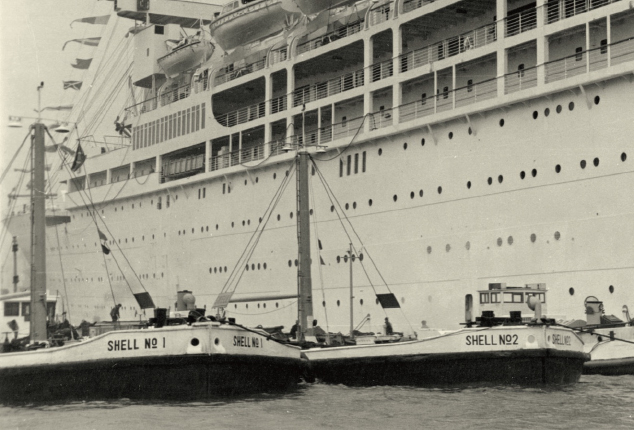
1950
Began overland transport using tanker trucks.
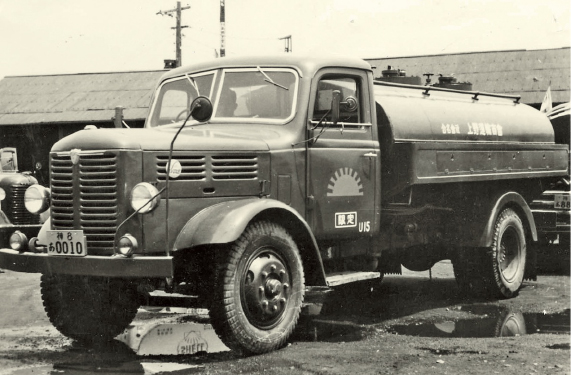
1955
First post-war coastal tanker, No.1 Akagai Maru (black oil, 1,850KL), joined fleet.
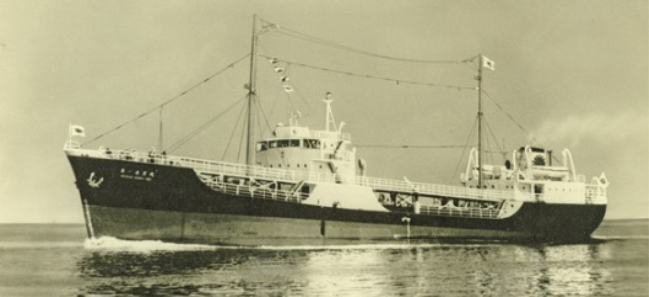
1957
Nation's largest coastal tanker, Kurogai Maru (black oil, 4,000KL), joined fleet.
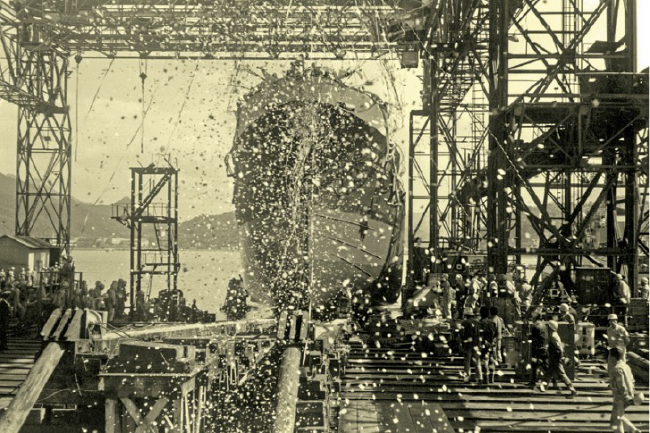
1959
First chemical tanker, No.1 Hinode Maru, joined fleet.
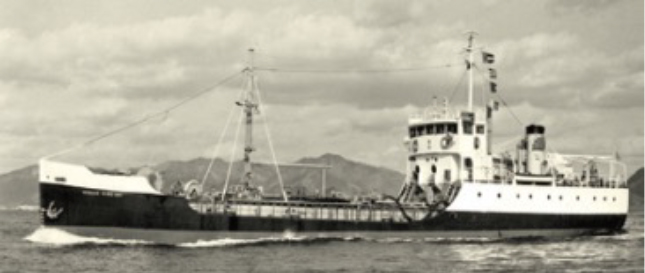
1960
Started operation of LPG tank trucks; fleet grows to over 100 trucks.
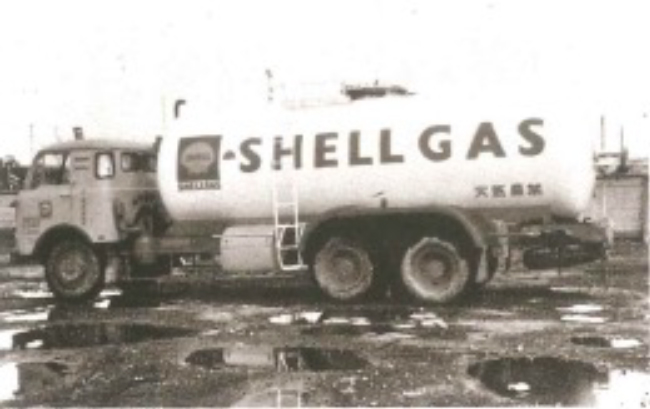
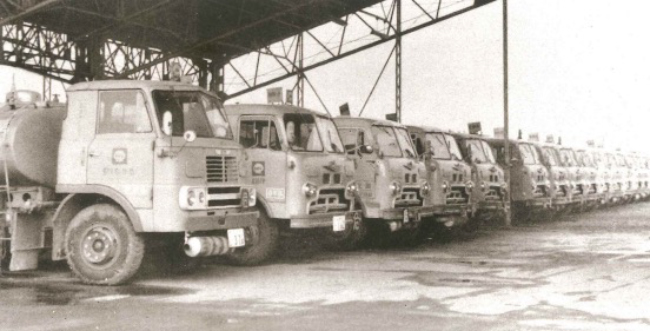
1961
Established Asahi Tsusan to sell petroleum products.
1962
Established Uyeno Chemical Unyu K.K. as a subsidiary chemical division.
1965
Opened the Group’s first petrol station in Kamakura.
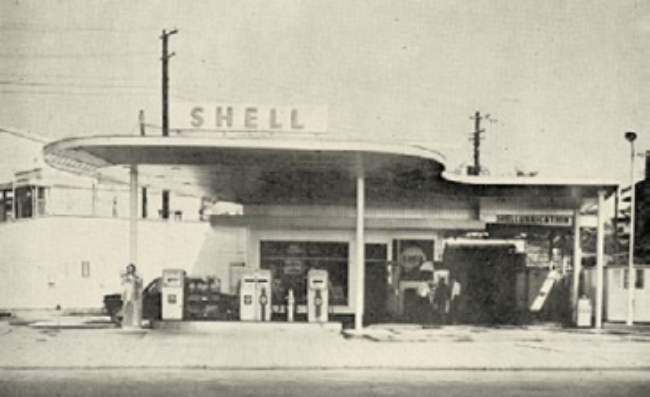
1966
Yutaka Uyeno took office as president.
1969
Shell Oil consigned Uyeno to supply petroleum products to the Japan Self Defense Agency.
1971
Established Isewan Bosai to start marine accident prevention service.
1975
Uyeno Unyu Shokai was reorganized as a corporation.
1977
Established Oxalis Shipping in Singapore.
1979
Yutaka Uyeno appointed as chairman of the Yokohama Chamber of Commerce and Industry.
1981
Overland transport division became independent as Uyeno Yuso.
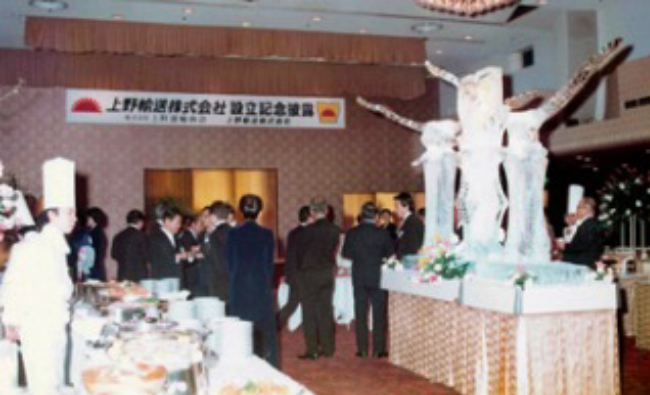
1983
Yutaka Uyeno assumes the post of president of the Japan Coastal Tanker Association..
1987
Takashi Uyeno took office as president.

1988
Completed the Dai-Ichi Uyeno Building at Yamashita-cho, Yokohama. Group company offices relocated.
1991
Uyeno Marine Service participated in the Emergency Assistance Corps to Saudi Arabia for clean-up of oil after the Gulf War.
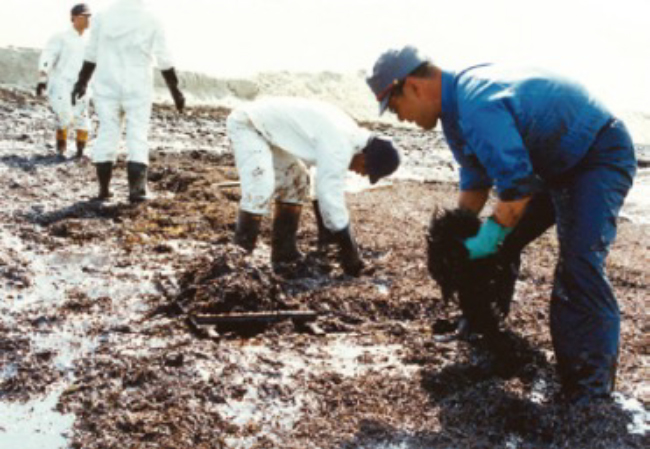
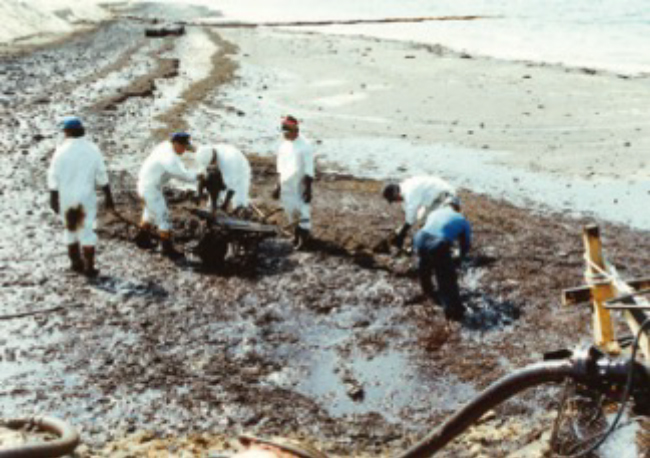
1997
The nation's first 6,000KL coastal tanker, Soubi Maru, joined fleet.
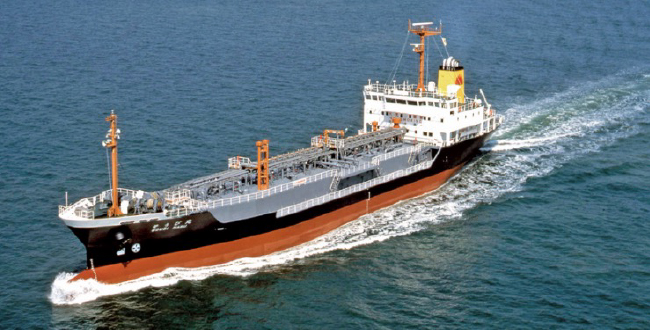
1998
Uyeno Unyu Shokai and Uyeno Chemical Unyu consolidated to form Uyeno Transtech.
Established Japan Oil Network through a joint venture with Showa Shell Sekiyu and Heiwa Kisen.
Established Japan Oil Network through a joint venture with Showa Shell Sekiyu and Heiwa Kisen.
2000
Uyeno Transtech acquired Heiwa Kisen to strengthen its business foundation.
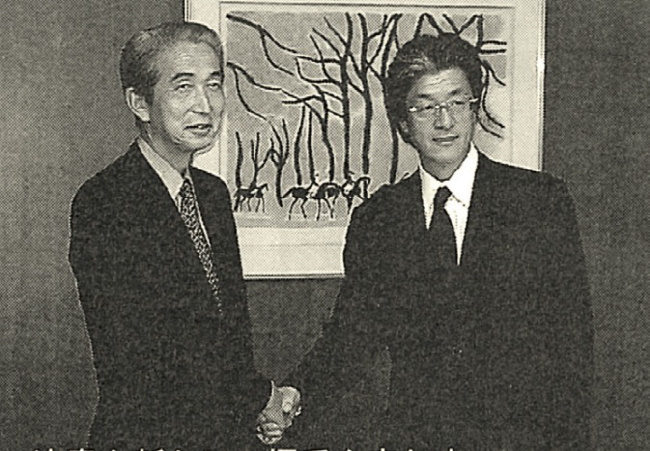
2001
Uyeno Transtech invited outside directors.
Takashi Uyeno appointed as governor of Rotary International District 2590.
Takashi Uyeno appointed as governor of Rotary International District 2590.
2002
Uyeno Transtech began operating the first coastal coal-ash carrier, Hekinan Maru.
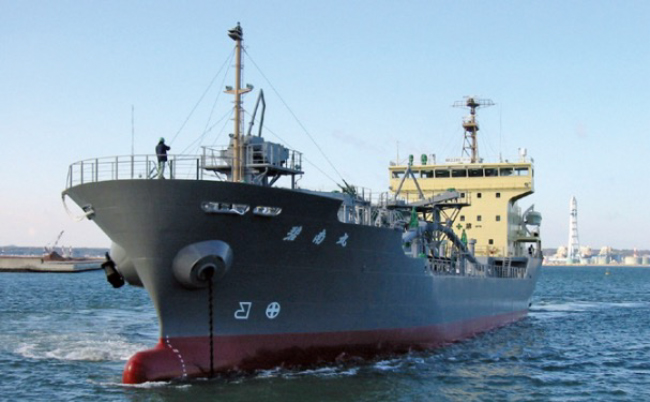
2003
Drivers' education facility Uyeno Safety Academy (USA) opened. (October 15)
2004
Uyeno Transtech acquired 65% share of Daiko Senpaku from Nisshoku Butsuryu. (April 30)
2005
Uyeno Transtech acquired 65% share of Daiko Senpaku K.K. from Nisshoku Butsuryu Co., Ltd. (April 30).
Uyeno Transtech and Hana Marine Co., Ltd. of South Korea established Uyeno Hana Transia S.A., a small ocean-going chemical tanker company (September 27).
Uyeno Transtech and Hana Marine Co., Ltd. of South Korea established Uyeno Hana Transia S.A., a small ocean-going chemical tanker company (September 27).
2006
Uyeno Transtech and Transnational Diversified Corp. of the Philippines establish Transnational Uyeno Maritime Inc. (TUMI) in the Philippines. This is the first introduction of double haul tankers in the Philippines. (June 15)
2007
SES1 (Super-Eco Ship 1) chemical tanker, No. 5 Nikko Maru joined fleet. (May 31)
2011
Carbon Ocean Line Co., Ltd., established (March 14)
Philippines NTMA Solar facility completed. (September 27)
Philippines NTMA Solar facility completed. (September 27)
2012
Uyeno Green Solutions Ltd.begins operations(April 2)
Irago Escort Business attains 100,000trip no-accidents,no-disasters mile stone. (August 29)
Irago Escort Business attains 100,000trip no-accidents,no-disasters mile stone. (August 29)
2013
Uyeno Group's first solar power system plant in Japan built in Tomakomai.
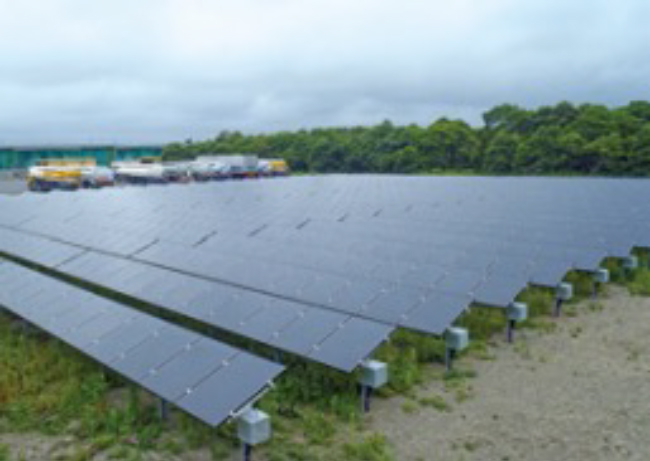
Uyeno Group's first mega solar power system plant in Japan built in Inashiki, Ibaraki.
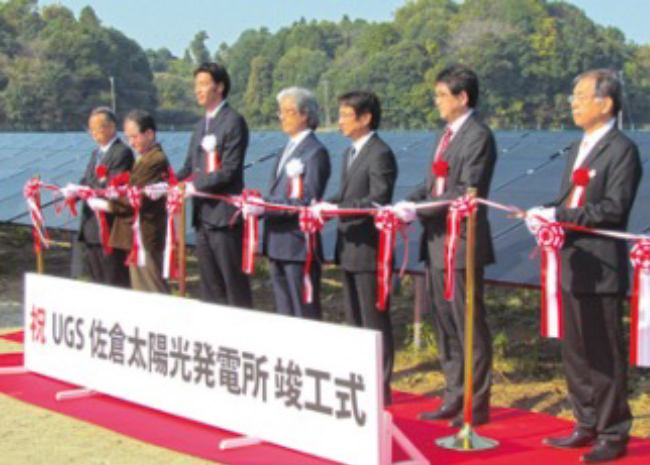
Uyeno Kosan acquired 100% stake in NCU Logistics, Ltd.
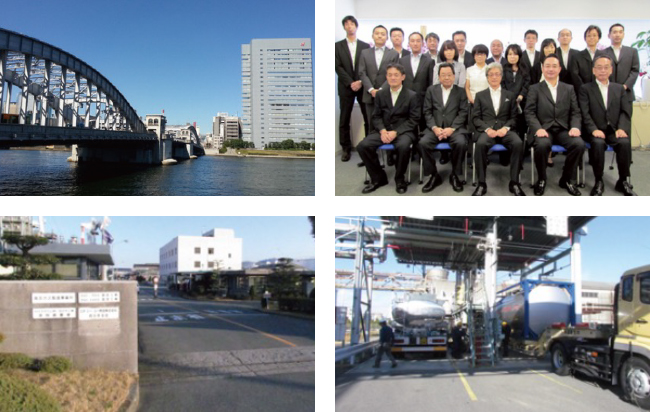
2017
Acquisition of shares of DLT ENTERPRISE PTE.LTD.
Establishment of TRANSNATIONAL UYENO SAFETY ACADEMY INC.
Establishment of TRANSNATIONAL UYENO SAFETY ACADEMY INC.
2018
Acquisition of 100% Shares of Shell Chemicals Japan Ltd.
2019
Oxalis Chemicals Ltd. and Japan Chemtech Ltd. merged to form new Oxalis Chemicals Ltd.
2020年
The head offices for Uyeno Transtech Corporation, Uyeno Logichem Corporation, NCU Logistics Corporation, Oxachem Corporation, Uyeno Green Solutions Corporation, as well as some functions of Uyeno Transport, Uyeno Industries moved to the Kasumigaseki Building.
2021
Uyeno Transtech Corporation and NCU Logistics Corporation integrated their coastal chemical shipping business into Uyeno Logichem Corporation and established a shipping division in the same company.
The 3 marine environment companies Uyeno Marine Services Corporation, Chubu Marine Services Corporation, Ise Bay Disaster Prevention Corporation assimilated together and started operating as Uyeno Maritime Japan Corporation.
Uyeno Industries Corporation, Ltd changed name to Uyeno Group Holdings Ltd
The 3 marine environment companies Uyeno Marine Services Corporation, Chubu Marine Services Corporation, Ise Bay Disaster Prevention Corporation assimilated together and started operating as Uyeno Maritime Japan Corporation.
Uyeno Industries Corporation, Ltd changed name to Uyeno Group Holdings Ltd